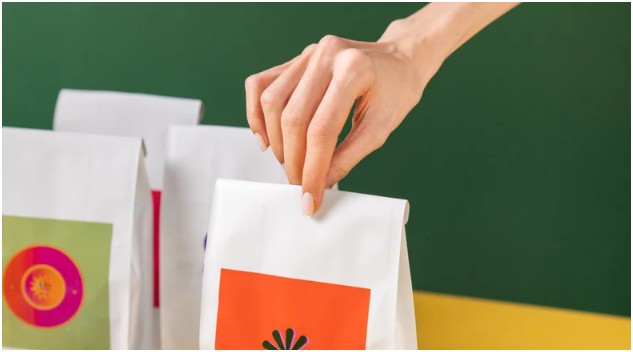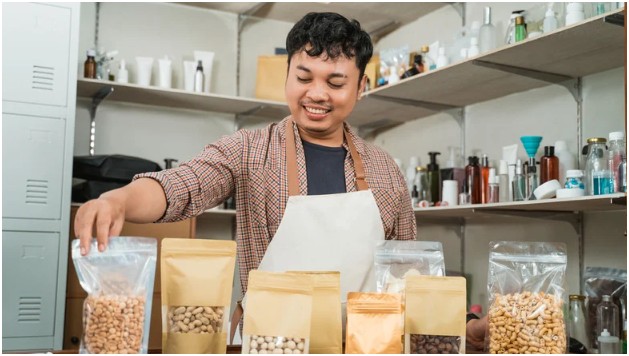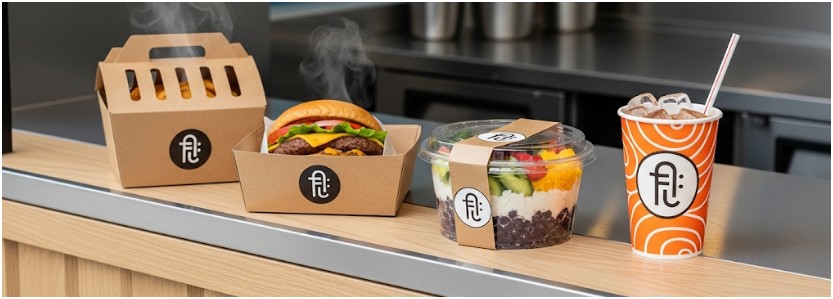Running a food kiosk is all about speed, convenience, and customer appeal. You want your food to taste great, but just as importantly, you want it to look good and travel well.
That’s where packaging comes in. More than just a container, packaging is often the first impression customers have of your kiosk—and in a competitive market, it can make or break your success.
From keeping food fresh to showcasing your brand identity, the right packaging does a lot of heavy lifting. Let’s dive into the key factors to consider when choosing packaging that doesn’t just serve your food but actually helps sell it.
Key Factors for Your Food Kiosk

1. Functionality Comes First
No matter how eye-catching your packaging is, it must serve its primary purpose: keeping the food safe, fresh, and easy to eat. Consider the nature of your menu items.
- Hot foods need packaging that retains heat without getting soggy. Think sturdy boxes with vent holes for fries, or insulated containers for soups and noodles.
- Cold items like salads or desserts need packaging that keeps them cool and prevents spills. Clear plastic domes or lidded bowls often work well.
- On-the-go meals require packaging that customers can carry easily in one hand or fit into a bag without tipping over.
Always ask yourself: Will the customer still enjoy this food after walking away from the kiosk? If the answer is yes, you’re on the right track.
2. Durability and Quality
While inexpensive packaging might seem like a money-saver at first, it often causes more problems than it solves. Thin paper wraps that tear or containers that leak can frustrate customers and leave a negative impression of your brand.
Instead, choosing durable packaging—enhanced with protective finishes like a water-based clear coat—helps maintain the food’s integrity and presentation, even if it’s carried around for hours.
Using sturdy, well-finished materials also communicates quality. Customers naturally associate strong, thoughtfully designed packaging with care and professionalism, which builds trust in your food before they even take the first bite.
3. Branding That Stands Out
Your kiosk packaging is a walking advertisement. Whether it’s a sandwich wrapper, a coffee cup, or a takeaway bag, every item that leaves your counter is a chance to spread your brand.
Consider these branding elements:
- Logo placement – Make sure your brand is visible on every package.
- Color scheme – Consistent colors create recognition and memorability.
- Typography – Fonts should be clear and align with your brand personality (playful, modern, traditional, etc.).
- Messaging – Short, catchy phrases like “Fresh & Fast” or “Made with Love” add personality.
If your packaging is attractive enough, customers might even share it on social media, giving you free exposure.
4. Sustainability Matters

Today’s consumers are more environmentally conscious than ever, and many actively prefer businesses that use eco-friendly materials.
Choosing biodegradable, compostable, or recyclable packaging not only reduces your environmental footprint but also makes your kiosk more appealing to customers who value sustainability.
Options include:
- Paper-based packaging instead of styrofoam.
- Compostable containers made from sugarcane, cornstarch, or bamboo.
- Recyclable cups and lids for beverages.
Even small steps—like offering paper straws or encouraging reusable cups—can enhance your brand image and show customers that you care about the planet.
5. Cost Efficiency Without Compromise
While it’s tempting to go all out with fancy packaging, you need to balance aesthetics with cost. High-end custom boxes may look great, but if they eat too much into your profit margins, they won’t be sustainable for your business.
Look for suppliers who offer bulk discounts or customizable yet affordable options. Sometimes, even a simple package can look premium with the right branding elements like stickers, stamps, or printed sleeves.
6. Ease of Storage and Supply
Food kiosks often have limited space, so bulky packaging that takes up half your storage isn’t practical. Choose stackable, space-efficient containers that can be stored neatly.
Also, ensure your packaging supply is consistent. Running out of the right containers during peak hours can lead to unhappy customers and last-minute compromises. Establish reliable supplier relationships to avoid stock issues.
7. Customer Experience and Convenience
Packaging should enhance the eating experience. Small touches make a big difference:
- Handles or carry-friendly designs for drinks and meal boxes.
- Built-in compartments to keep sauces, sides, or toppings separate.
- Clear labeling for orders, especially if you sell multiple similar-looking items.
When customers feel that your packaging makes their life easier, they’re more likely to return.
Final Thoughts about Key Factors for Your Food Kiosk
For food kiosks, packaging is more than just a container—it’s a business tool. Functional, durable, well-branded, eco-friendly packaging not only protects your food but also promotes your kiosk and builds customer loyalty.
By investing in packaging that aligns with your food, your brand, and your customers’ expectations, you set yourself apart from competitors and create a memorable dining experience that sells itself.
In the fast-paced world of food kiosks, good packaging isn’t an afterthought—it’s a recipe for success.



